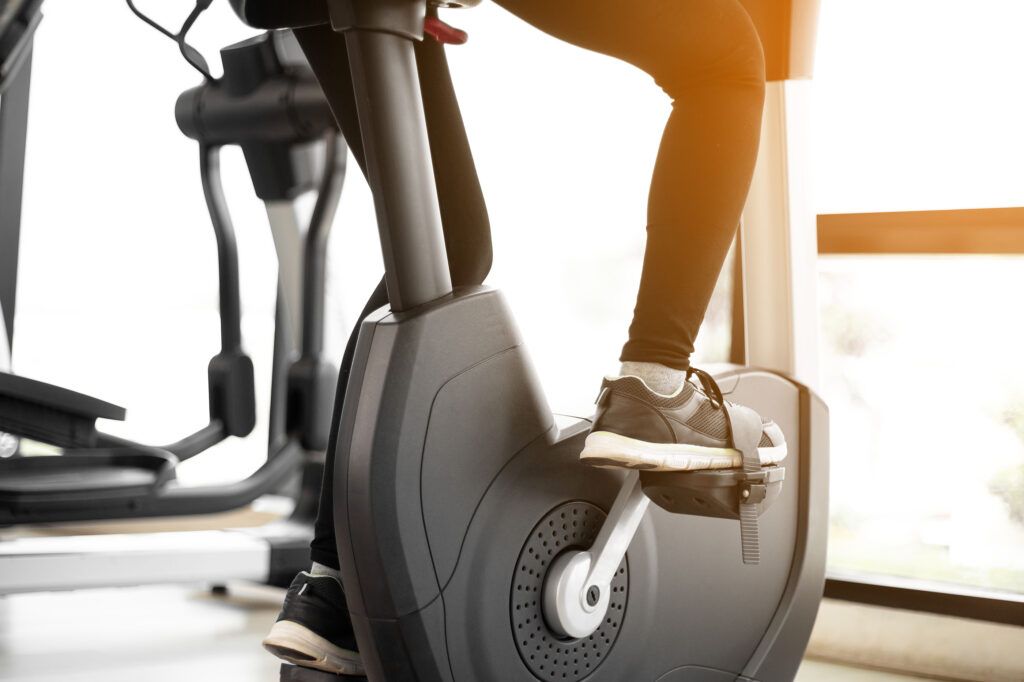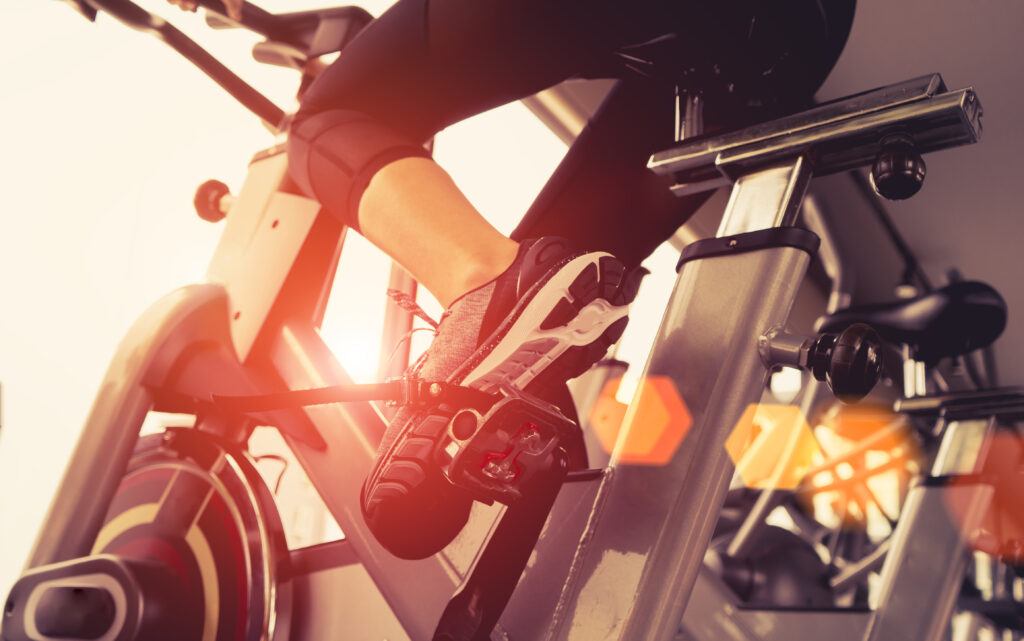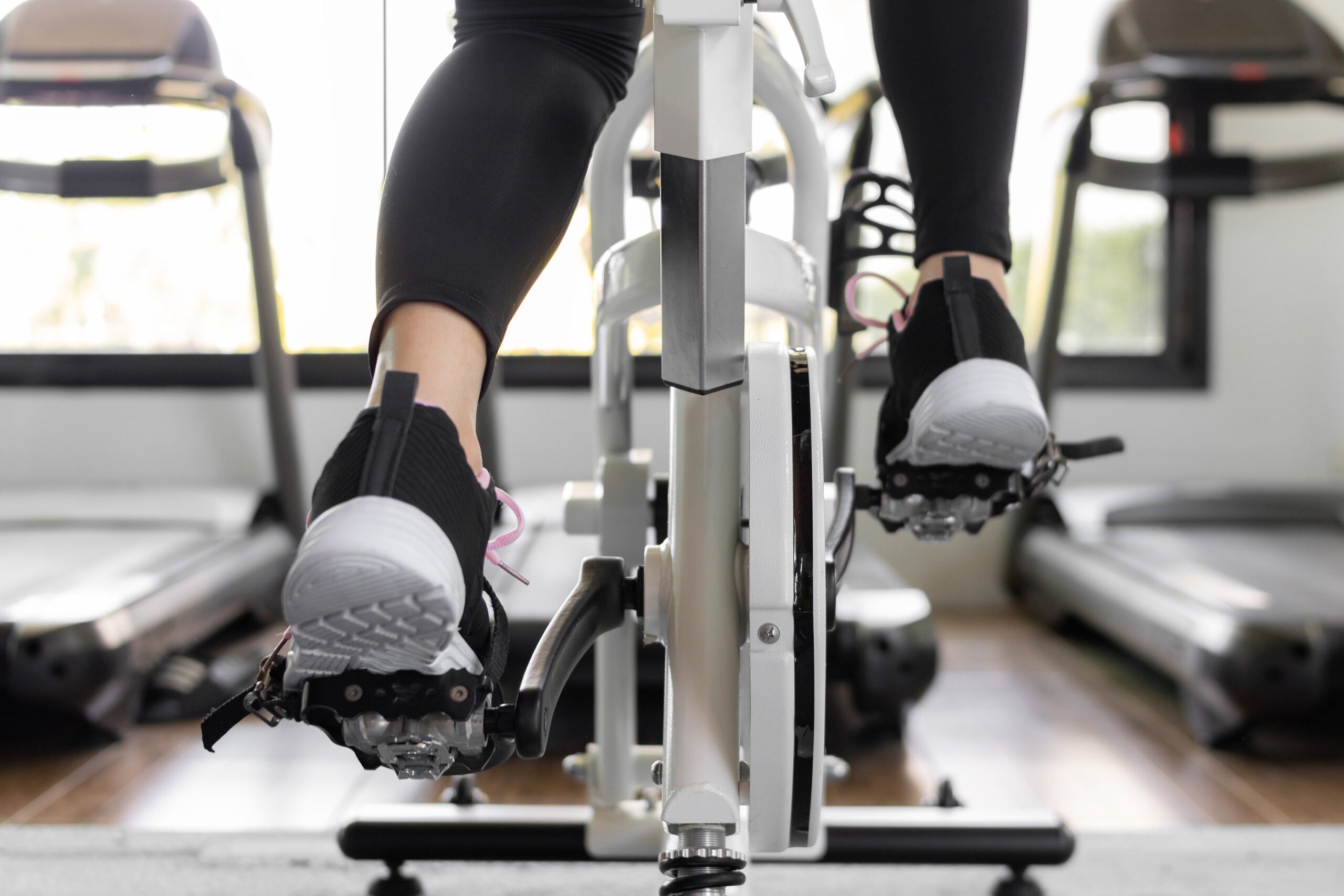When you’re shopping for a new exercise bike, the type of pedals it comes with probably isn’t the first thing on your mind.
And understandably so.
With so many different performance specs to consider, not to mention the excitement that comes with checking out all the console features and whatnot, the lowly pedal can easily get lost in the mix.
I agree, the type of pedal your exercise bike comes with certainly isn’t the biggest priority when it comes to buying a new bike, but it’s still something worth looking into before making a purchase.
Luckily, this is pretty straightforward stuff – there isn’t too much info you have to worry about when it comes to the pedals.
Regardless, I put this guide together to go over all the in’s and out’s you should be aware of when it comes to the type of pedals exercise bikes come with.
After reading, you’ll know everything you need to when it comes to finding the best style of pedal to meet your fitness needs.
Off we go.
4 Styles Of Exercise Bike Pedals
There’s really only 4 categories of pedals that you’ll find on exercise bikes these days and they each have their own advantages and disadvantages.
These include flat pedals, toe cages, clipless pedals, and the ever so popular dual-compatible pedals.
Let’s take a closer look at each one.

Flat Pedals
Flat pedals are your classic, old school pedals that you probably had on your bike growing up as a kid.
There’s nothing fancy about these guys, but they’re easy to use because you don’t need any specialized riding cleats or anything else to use ’em.
Simply hop on and start pedaling.
And even though they’re best paired with sneakers, technically, you could wear any type of footwear you like.
Flat pedals can come with adjustable straps to help keep your foot in place or without.
We usually see flat pedals on air bikes (without straps), standard upright bikes (with straps), and recumbent bikes (usually with straps).
The straps allow you to keep the pedals moving as you elevate your leg during the pedal upstroke (hip flexion), instead of having to rely solely on pushing your foot down (hip/knee extension).
This makes for a more efficient pedaling motion.
One might wonder why air bikes don’t usually come with straps…
My guess is that since you’re using your arms too, there’s less need for the pulling action during the upstroke of pedaling.
Upright and recumbent bikes sometimes come with weighted or self-leveling pedals – this means they’re counter-balanced to ensure they always rest in the right position for you to place your foot on ’em.
Not a huge deal, but certainly a convenient little feature.
Toe Cage Pedals (Toe Clips)
Toe cage (aka “toe clip”) pedals come with a little compartment on top of the pedals designed to keep your foot securely in place during workouts.
Your shoe doesn’t physically connect to the pedal, so you don’t have to worry about wearing special footwear – sneakers will do nicely.
The “cage” on top of these pedals can vary a lot in shape and size, but the purpose remains the same – to keep your feet securely attached to the pedals during workouts.
Toe cages usually come with adjustable straps, allowing them to fit shoes of various sizes.
Toe cage pedals are found on a lot of indoor cycles because they offer a better connection to the pedal than a simple strap on a flat pedal.
This means with toe cages, you can get a more efficient upstroke, helping you reach faster cadences, as well as help push against heavier resistances (both of which are usually done regularly during indoor cycling workouts).
Toe cages offer the benefit of giving you a more secure connection to the pedal without having to use specialized cleats, but you do still have to deal with loosening and tightening them up.
Clipless Pedals
The name “clipless” is a bit misleading because these pedals refer to pedals that use cleats – and with cleats, you do “clip in” to the pedal.
But these pedals are lacking the toe clips (or cages) found on the pedals mentioned above, so hence the “clipless” nomenclature.
But don’t be confused – with clipless pedals, you will need cleats.
You see clipless pedals on most higher-end indoor cycles because they provide the most efficient pedaling motion.
These pedals provide a more secure connection to the pedal than toe cages, allowing you to get the most out of each pedal stroke (you can take full advantage of the upstroke on each leg).
With cleats, most riders find it easier to reach faster speeds because you don’t have to worry about your feet coming off the pedals.
The biggest disadvantage though, is that you have to purchase the right kind of riding cleats to match the pedals on your bike.
Luckily, even though there are several styles of road bike cleats, most exercise bikes use one of 2 styles of pedal:
SPD
Most clipless pedals found on exercise bikes are SPD cleat compatible – these are easily the most common.
SPD (Shimano Pedaling Dynamics) simply refers to the company that designs this style of cleat, which uses a 2 bolt system to connect the cleat to the pedal.
The terms “SPD” and “clipless pedals” are sometimes used interchangeably, but technically, SPD is a specific kind of clipless pedal.
But again, the vast majority of exercise bikes that use clipless pedals, are SPD compatible.
LOOK Delta
LOOK Delta is another style of clipless pedal that uses their own, 3 bolt or triangular shaped system (which I’m guessing is where the “delta” came from).
You don’t see Delta cleats on that many spin bikes, but Peloton still uses ’em.
With Delta cleats, you have to use a more rotational movement to unlock from them, but I can say from experience that Delta’s are easy to use and quite comfortable.
When in doubt, it’s pretty safe to assume that a new cycle you’re purchasing uses SPD pedals, but it’s still a good idea to always check the fine details.

Dual-Compatible
The last kind of pedals we’re seeing on more and more exercise bikes these days are the dual-compatible kind.
These pedals come with a toe cage on one side and a cleat compatible clipless system on the other (usually SPD compatible).
Dual-compatible pedals are great because they allow you to wear any kind of shoe you want to workout in.
Don’t feel like messing with cleats? No worries, simply hop on and use the toe cage side.
But if you’re looking for a more serious workout, grab your cleats and clip in.
These pedals work great for families with multiple riders too, especially if some riders don’t want to worry about having to swap shoes every time they ride.
Dual compatible pedals are mostly found on indoor cycles and are becoming more and more common, especially in moderately priced cycles.
Final Thoughts
Ok, that about does it for pedals.
The 4 categories mentioned above should cover about 99% of the pedals you’ll see out there – you might come across a different clipless style, but probably not.
Either way, make sure you always confirm what kind of cleat your bike of choice is compatible with.
To sum things up: flat pedals are the most basic and can be used with any shoe; toe cages are nice because they give you a little more connection to the pedal; clipless pedals work with cleats and give you the most secure attachment to the pedal.
Then there’s dual-compatible pedals that come with a cage on one side and a clipless system on the other.
Something else to keep in mind, is that if you find a bike you really like, but it doesn’t have the kind of pedals you want, you can always swap ’em out.
It’s really easy to replace bike pedals.
Pretty much all indoor cycles use standard road pedals, so they should all be compatible with any cycle you get.
Just remember that the left pedal screws in counter-clockwise.




